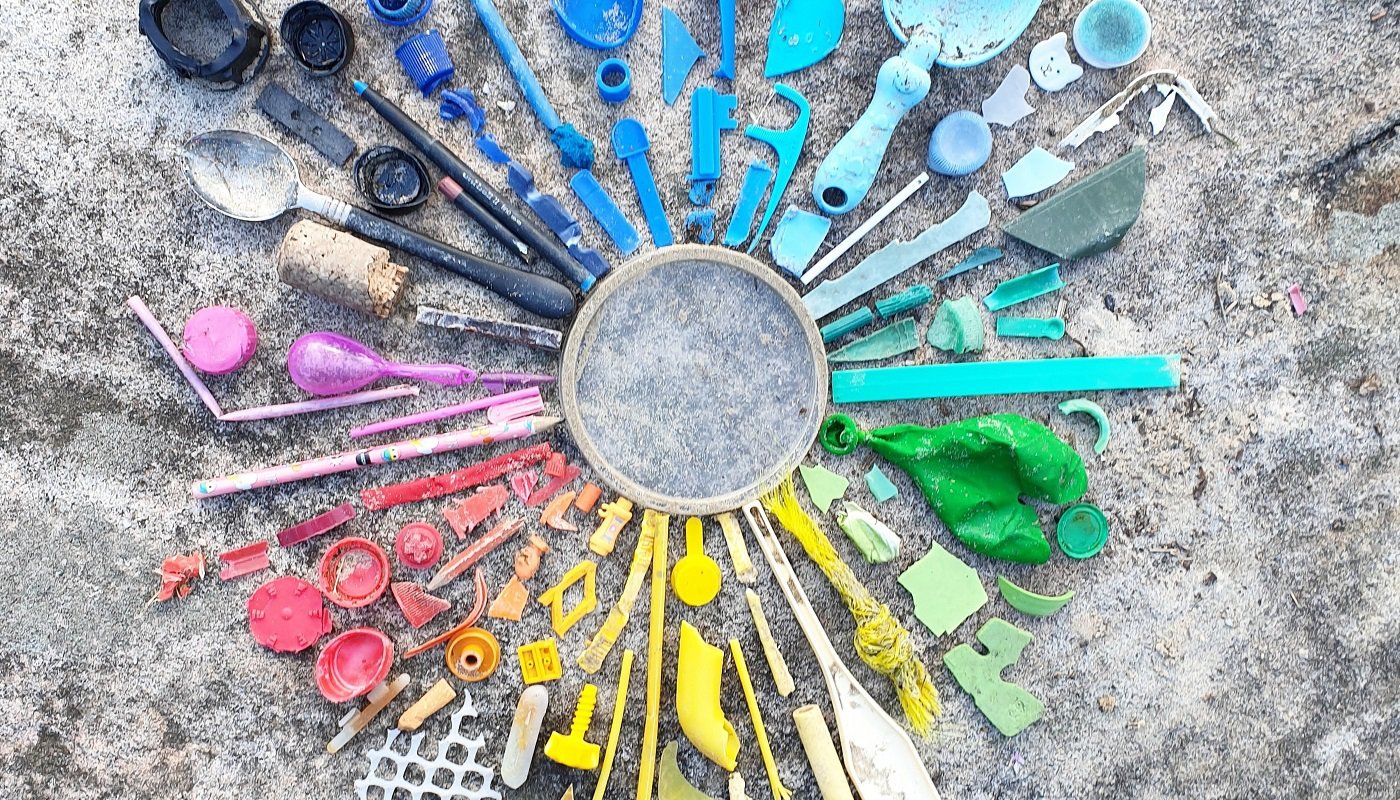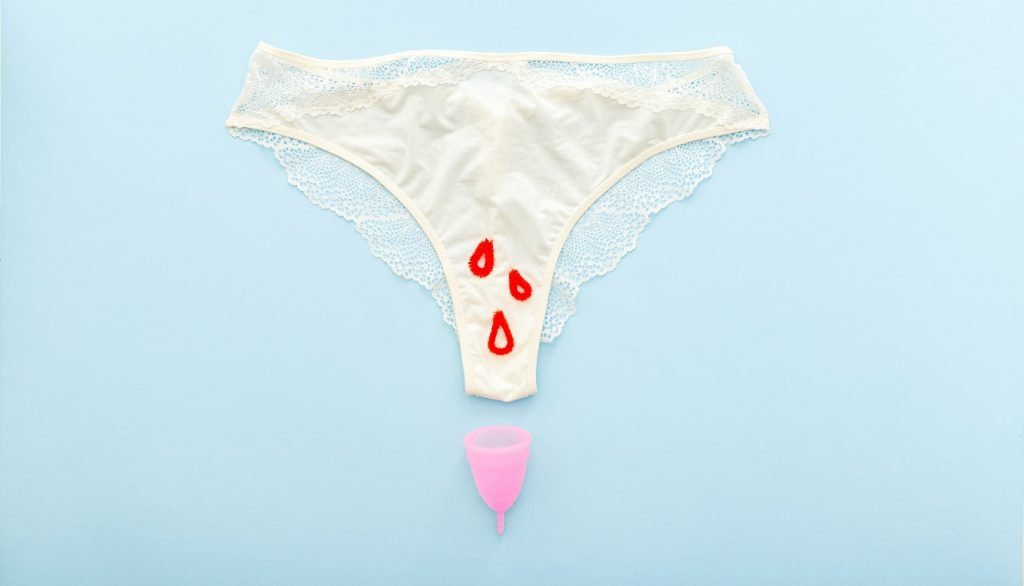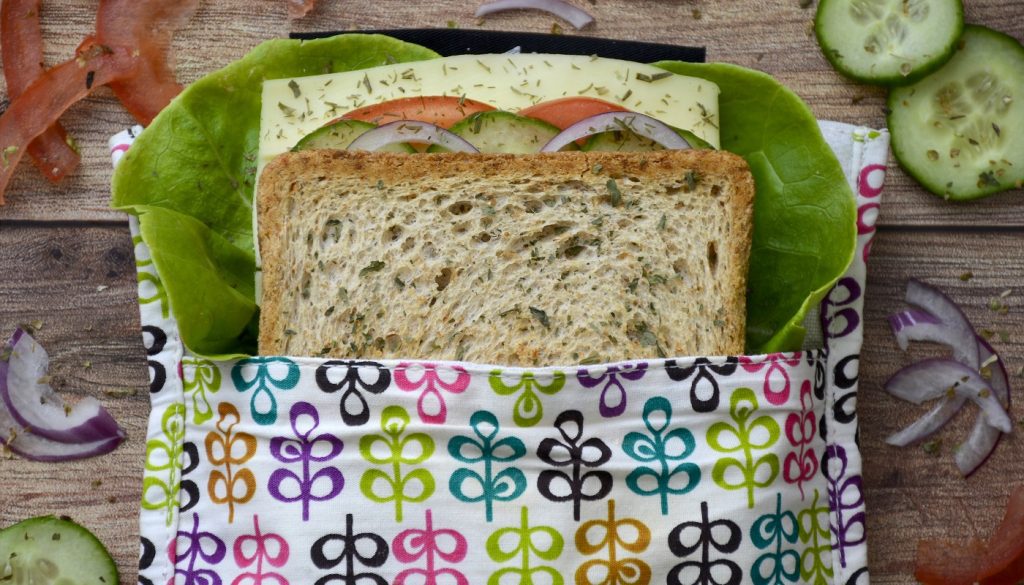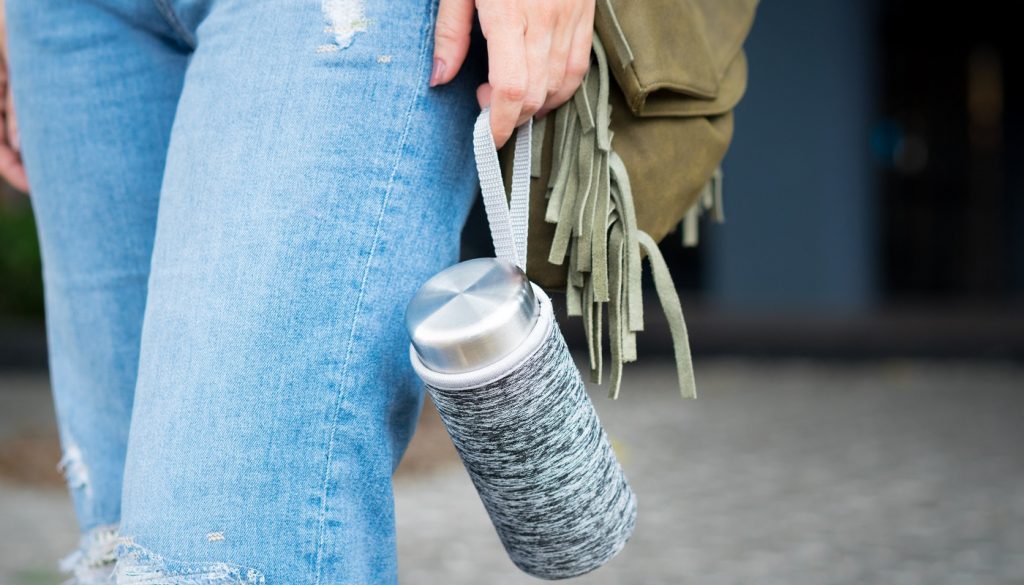When you’re trying to mobilize a social movement, art can be a great way to unite and inspire people. It can start conversations, speak truth to power, and help people feel heard.
These eco-artists are helping spread the message of climate activism with their incredible work—check them out!
1. Diane Burko’s stirring photography and paintings
Diane Burko describes her work as “the intersection of art & the environment”. Her photographs and paintings illuminate the actual state of nature today, and call attention to the impact of human activity in once-thriving ecosystems.
In a recent collaboration with Canada Goose, Burko’s designs were used for a seasonal line of products. The imagery came from her “Elegy” series, which documented melting glaciers through a series of aerial photographs and interpretive paintings.
Burko’s most recent gallery exhibit entitled “Seeing Climate Change” is currently on display in American University’s art museum. The abstract paintings highlight the dire situation that climate change has created for arctic glaciers and the ocean.
2. El Anatsui’s reclaimed litter sculptures
El Anatsui is a Ghanaian sculptor who utilizes discarded items in his sculptures and murals. His pieces call to light the nature of colonialism and how it plays into consumerism and waste. Many of his pieces use discarded metal to create brilliant tapestries that are full of motion.
In addition to the eco-aspects of his art, Anatsui is regarded as one of the most influential contemporary artists to date. His broad body of work has inspired countless young eco-artists to speak truth to power, in addition to using unconventional materials.
One of Anatsui’s more recent works from 2020 is entitled “Visitation” and was made with reclaimed liquor bottle caps.
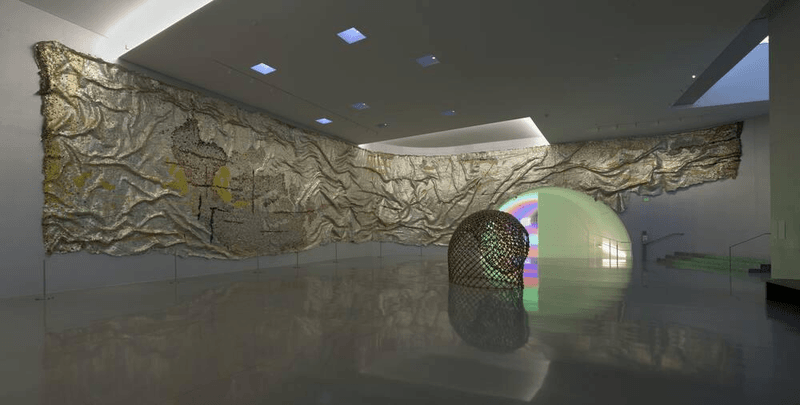
3. Aurora Robson’s upcycled plastic sculptures
Aurora Robson takes plastic that would otherwise be thrown away and makes it into stunning sculptures. She even organizes litter collection events from streams and other natural spaces to get plastic out of nature. She breathes new life into trash, all while calling attention to the epidemic of single-use plastic.
Robson is also the founder of Project Vortex, an initiative to inspire other eco-artists to utilize waste in their art, in addition to campaigns to educate the general public about plastic pollution. Project Vortex also has a curriculum that can be adapted for use in the classroom, so teachers can utilize reclaimed waste in art classes or lessons about environmentalism.
4. Ruth Wallen’s multimedia advocacy
Ruth Wallen is an activist whose work encourages dialogue about climate change and conservationism. She often utilizes photomontages to splice images from different times and places to evoke her intended imagery.
One art exhibit, “Cascading Memorials”, asked viewers to share in a journal which plant and animal species they have lost in their communities, offering “A Place to Grieve”. There was then an opportunity for viewers to share their hopes for the future on an interactive wall mural.
One of Wallen’s ongoing projects called “Walking with Trees” brings attention to the decline of California’s forests due to wildfires and deforestation. The collages of images from different moments in time allow glimpses into the once-vibrant forests that are now fractured.

5. Marina DeBris’ “Trashion”
Marina DeBris makes garments and sculptures out of the ocean plastic she finds washed up on the local beach on her daily runs. Her pieces are a haunting reminder that discarded plastic never really goes away.
DeBris’ pieces are deeply affecting, perhaps because they utilize real human models. Seeing a person draped in reclaimed plastic is incomparable- the plastic seems to swallow the models whole. Maybe the pieces help to foster empathy for ocean life in the viewers- if a human model can be covered in this much plastic waste, imagine what harm plastic pollution constantly wreaks on ocean ecosystems.
Pictured below are “Do I Make Myself Clear”, a dress made entirely of discarded takeout containers, and “Dirty Laundry”, which is made up of washed-up laundry baskets and clothing.
6. Aviva Rahmani’s Blued Trees Symphony
Aviva Rahmani is a contemporary artist and environmental activist based in Manhattan and Maine. She often collaborates with scientists and other experts to create art that is both evocative and informative.
One of Rahmani’s largest projects to date was the Blued Trees Symphony, which combated a proposed natural gas pipeline by utilizing copyright law. She and her team painted trees to represent a score of music, with each painted tree being a note and a measure spanning one-third of a mile. Since the work was copyrighted, the land area was protected from eminent domain development.
Rahmani’s groundbreaking and interdisciplinary work has opened countless conversations about environmentalism. Her work demonstrates the importance of eco-art in the movement against climate change.
7. John Sabraw’s reclaimed pigments
Rather than importing mass-manufactured paints from overseas, John Sabraw utilizes pigments from the toxic sludge that oozes from abandoned iron mines from his area in Ohio. His work with scientists developed a way to process this pollution into usable paint for himself and other artists.
Sabraw is a professor at Ohio University, where he conducts the bulk of his research. He was recently featured in a TED Talk where he shared his journey in working with environmental scientists to repurpose the iron pollution.
Sabraw’s finished pieces are in bold and vivid hues that make them full of life. Without the knowledge of where the paint came from, you might not even know that it was once pollution!
Your place in the climate fight
Whether you’re an eco-artist yourself or a supportive spectator, seeing the amazing creativity from other artists is an inspiring way to stay motivated in the fight against climate change.
This is also a great reminder that we need all kinds of people to help fight this crisis. You don’t need to be an environmental scientist to do your part- just do whatever it is that you do best. For me, that’s writing about what I learn about the climate crisis.
We need businesspeople, engineers, teachers, lawyers, and politicians if we’re ever going to turn this around. Once you figure out your role, you can help us tackle this crisis all the better. Keep fighting the good fight, eco-warrior!
